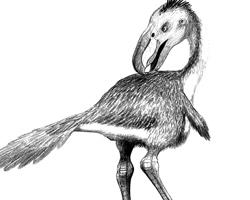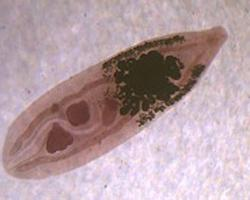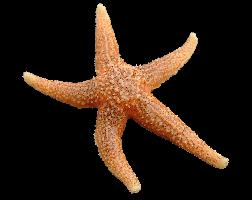
Poids et mesures
| Hauteur au garrot | de 0,6 à 3,5 m |
|---|---|
| Vitesse | 50 km/h |
Statut de conservation
| Éteint |
Description de l'animal
Phorusrhacids, more commonly known as "terror birds," are an extinct family of large, flightless birds that once roamed the plains and forests of South America. These formidable predators are a part of the Phorusrhacidae family and are renowned for their imposing stature and predatory nature, which have fascinated scientists and the public alike. Their existence spanned from the Paleocene to the Pleistocene epochs, approximately 62 to 2.5 million years ago, indicating they thrived for millions of years before their eventual extinction.The terror birds ranged in size, with some species standing up to 3 meters (nearly 10 feet) tall, making them one of the largest predatory birds to have ever existed. Their physical build was robust and powerful, with long legs adapted for running at high speeds, which was likely a key aspect of their hunting strategy. These birds were not only fast but also agile, capable of sudden bursts of speed to ambush prey or evade threats.
One of the most distinctive features of Phorusrhacids was their large, hooked beak. This formidable weapon was likely used to deliver deadly blows to their prey, possibly crushing bones or severing vital arteries with ease. The shape and size of their beak suggest they were capable of consuming a wide variety of prey, including small to medium-sized mammals, reptiles, and even other birds. The skull of Phorusrhacids was equipped with a powerful and muscular neck, allowing them to strike with significant force and precision.
Despite their fearsome reputation, the lifestyle and behavior of Phorusrhacids are subjects of ongoing research and debate among paleontologists. Some theories suggest they were solitary hunters, while others propose they might have hunted in pairs or small groups, similar to some modern-day predators. Their extinction is believed to be linked to a combination of climate change and competition with other predators, including the arrival of North American carnivores into South America during the Great American Interchange.
Phorusrhacids have left a lasting impression on the scientific community due to their unique evolutionary history and their role as apex predators in their ecosystems. Their fossils, mainly found in South America, have provided valuable insights into the diversity of life on Earth and the dynamics of prehistoric ecosystems. The study of these magnificent birds continues to contribute to our understanding of avian evolution, extinction patterns, and the ecological impact of large predators.
In popular culture, terror birds have captured the imagination of many, often portrayed as formidable and fearsome creatures in books, documentaries, and films. Their legacy as one of the most intriguing and captivating extinct animals remains strong, highlighting the endless fascination with the natural world and its ancient inhabitants.
Animaux similaires
Nouvelles photos d'animaux
Top 10 des animaux
- Dolphin gull (Leucophaeus scoresbii)
- Diana monkey (Cercopithecus diana)
- Moustached guenon (Cercopithecus cephus)
- Galápagos tortoise (Geochelone nigra complex)
- Japanese macaque (Macaca fuscata)
- Russian tortoise (Testudo horsfieldii)
- Stone loach (Barbatula barbatula)
- Greek tortoise (Testudo graeca)
- Common flying dragon (Draco volans)
- Vendace (Coregonus albula)


